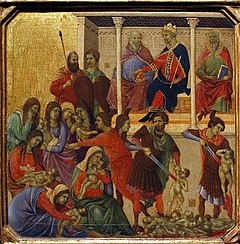 |
| Saturday walk to the sculpture park and other exhibits is always pleasant... |
 |
| and safe, in Providencia, at least.... |
 |
| I loved this film "Machuca" about a young boy in a good school, from a "good" family who is influenced by strong peers to rebel, and consequently bullied by opposing faction peers during the Pinochet dictatorship, creating all kinds of family and social problems. |
An art form on display at the Providencia Foundation is entitled "Protagonists of Chilean Cinema". Most films, well-known to Chileans and with many stars I have never heard of. These actors and films are part Chile's cultural heritage. On my ferry trip 2 months ago I saw these 3 (one I previously watched here) films, which were well-done and have left a lasting impression on me:
Violete se fue al cielo" (Violeta Parra, played by Francisca Gavilan was a folk artist and songwriter well-known in Chile)
 |
(Pablo) "Neruda", who was a politician, collector, Nobel Prize for poetry winner (just a small segment of his famous life) |
Not having too much to report, and feeling very "culturally" illiterate, I decided to find out what important people were born on March 24 (Houdini and only a few others I recognized), and who died. Queen Elizabeth I (last of the 5 Tudor monarchs) died in 1603. The throne went to James VI of Scotland who became James I of England and Ireland. Her long 44-year reign brought stability and is highlighted by Shakespeare and Francis Drake and the power of the British navy. If you have nothing more interesting to occupy your time, look up a date! A sample of interesting events of this day, March 24, are:
1721- Bach dedicated the Brandenburg concertos
1829- Catholics were allowed to serve in Parliament
1832- Joseph Smith was tarred and feathered in Hiram,Ohio
1837- Canada gave African American men the right to vote
1854- Slavery was abolished in Venezuela
1933- The Reichstag and Reichsrat approval of the Enabling Act,
amendment to the Weimar Constitution, gave the German
cabinet (i.e. Chancellor Adolf Hitler) the unlimited power
to enact laws without Reichstag (Parliament) approval.
1934- The US allowed the Philippines self government within the
commonwealth
1976- Isabel Peron's constitutional government was overthrown in
a military coup.
1999- NATO (for the first time without UN Security Council
approval) attacked Yugoslavia, beginning the Kosovo War
2019- I look around me and see most people going about their
business, totally oblivious to the great mess our world is in.
But I do have faith in many individuals who really care and
are doing their best to help others, of their own blood or not,
in small ways. I applaud them!
I was not born on this day like Steve McQueen or the famous bank robber Clyde Barrow (of Bonnie and Clyde fame), and will not join the army as Elvis Presley did on this day in 1958, but pass on a few artistic endeavors around me that give form to simple or accessible materials, and beauty for the enjoyment of others.
In the Providencia Sculpture Garden I enjoyed the granite pieces of Soledad Ramsey (that is hard work!) who says she is inspired by the rock itself, the mountain which contains it, the landscape that surrounds it, the structure and environment that form it. She continually walks around the granite block to see it from all angles.
 |
| "Insertion" |
The models for her sculptures
 |
| This cute boy's grandfather told me I should love these pieces, too, as California mountains are made of the same granite. She uses different cuts and polishes to different degrees for texture. |
 |
| "Scraped" (rough) |
At the Cultural Foundation is a small exhibit of small-format (20x20 cm.) by Chilean and Uruguayan textile artists.
"Organic" (left)






















































